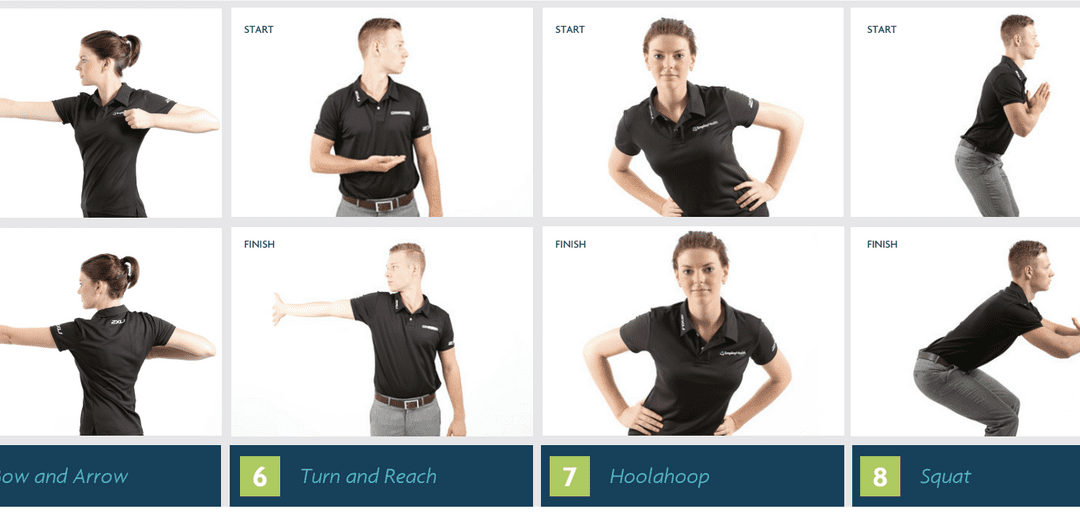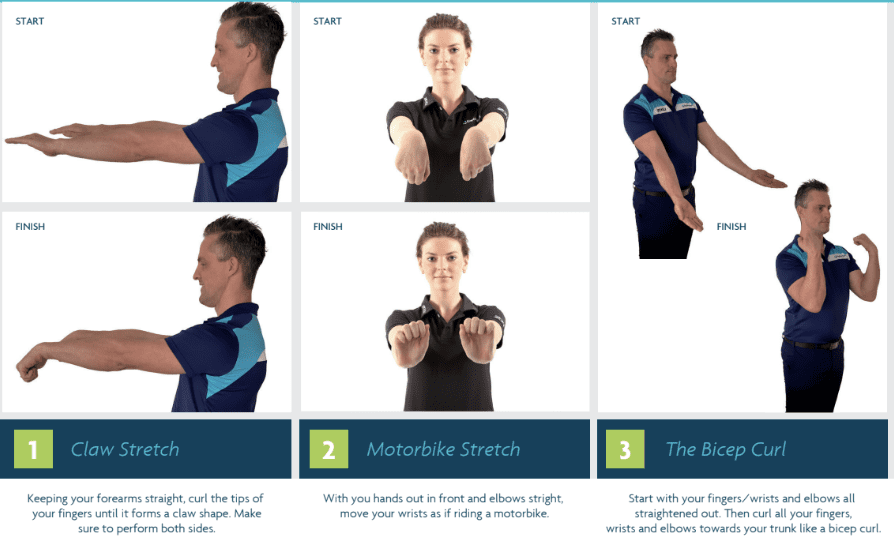What are dynamic stretching exercises, and why are they important?
It’s all in the name; dynamic stretching exercises involve stretching muscles while moving. Often this movement will be similar to what’s involved in the task you are about to do. Imagine a golfer doing some practice swings before they hit the ball, or a javelin thrower moving the javelin back and forth overhead. The key aspect is movement, taking the muscle and joint through the range of motion you are about to ask it to do. It’s worth noting that this is different to static, or ‘stretch and hold’ exercises, which have actually been shown to reduce performance when completed before activity. Long hold stretching can still be valuable for certain situations, and is often recommended to be completed after an activity to improve recovery.
By completing dynamic stretching exercises to take the muscle and joint through the range of movement you will do in your activity, you’re preparing the mind and body for that movement. It will help activate the relevant muscles, increase blood flow to the area and elevate nerve activity. Dynamic stretching exercises have been shown to prevent musculoskeletal injuries, as well as reducing pain and disability. Almost every professional sporting team will do this before every training and playing session, and attempts are being made to make it standard practice in all youth sports. Now, many workplaces are coming on board, making it standard practice for their industrial athletes to complete a set of exercises before they start their day. This benefits not only the workplace by reducing injury risk, but also the individual who gets to go home to their loved ones safe and healthy.
Where to start with dynamic stretching?
When it comes to a good dynamic stretching exercise program, it’s a good idea to have a core set of exercises that you complete each time. These are the exercises that will warm up the whole body. Then, add in a couple of extra exercises targeting the main area of the body you’ll be using. We‘ll take you through some core exercises, and also how you can add to them to make your preparation specific to the activity.
10 neck rolls:
Gently roll your neck from side to side.
10 shoulder reaches:
Start with your elbows back and shoulder blades together, then reach forward, turning your arms in so that the back of your hands touch in front of you.
10 reach and twists:
Start with your palms together in front of your stomach, and then reach up overhead, touching the backs of your hands together.
10 shoulder rolls:
Grasp your hands behind your back and gently take your hand away from your back behind you, allowing your shoulder to stretch forward.

10 bow and arrows (each side):
Hold both hands out in front of you, then draw one hand back (like drawing the string on a bow), taking the elbow all the way back.
10 turn and reach (each side):
Start with your hand in front of your chest, palm facing upwards, and then reach out to the side all the way following the path of your hand with your head.
10 hoolahoops (each side):
Start with small hip circles and progressively make them bigger.
10 squats:
Finish up with some squats.

Adding in some movement-specific extras
The key here is to identify the main body parts and movements being used in the activity you’re completing, and incorporating exercises that target those areas. For example, many industrial athletes use their upper limbs a lot in activities such as picking, packing or production. Therefore in a workplace setting, adding in some extra upper limb dynamic stretching exercises such as the claw stretch, motorbike stretch and bicep curls can be a great way to customise the program.

